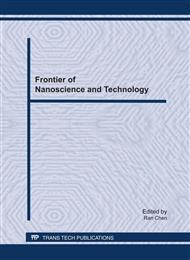[1]
R.C. Garvie, R.H.J. Hannick and R.T. Pascoe: Nature Vol. 258 (1975) pp.703-704.
Google Scholar
[2]
R. Stevens: Zirconia and Zirconia Ceramics (Magnesium Electron Ltd., UK., 1986) pp.28-43.
Google Scholar
[3]
L. Gakovic, U.S. Patent 7, 214, 046 (2007).
Google Scholar
[4]
C. Piconi, W. Burger, H.G. Richter, A. Cittadini, G. Maccauro, V. Covacci, N. Bruzzese, G.A. Ricci and E. Marmo: Biomaterials Vol. 19 (1998) pp.1489-1494.
DOI: 10.1016/s0142-9612(98)00064-7
Google Scholar
[5]
S. Deville, J. Chevalier and L. Gremillard: Biomaterials Vol. 27 (2006) pp.2186-2192.
Google Scholar
[6]
W. Konig, D. F. Dauw, G. Levy and U. Panten: Annals of the CIRP Vol. 37 (1988) pp.623-663.
Google Scholar
[7]
G. Anne, S. Put, K. Vanmeensel, D. Jiang, J. Vleugels and O. Van Der Biest: J. Eur. Ceram. Soc. Vol. 25 (2005) pp.55-63.
Google Scholar
[8]
J. Vleugels and O. Van Der Biest: J. Am. Ceram. Soc. Vol. 82 (1999) pp.2717-2720.
Google Scholar
[9]
B. Basu, J. Vleugels and O. Van Der Biest: J. Alloys Comp. Vol. 334 (2002) pp.200-204.
Google Scholar
[10]
B. Basu, J. Vleugels and O. Van Der Biest: Key Eng. Mater. (2002) pp.1177-1180.
Google Scholar
[11]
ASTM E1876-97 (1998): STANDARD Test Method for Dynamic Young's Modulus, Shear Modulus and Poisson's Ratio by Impulse Excitation of Vibration, Annual Book of ASTM Standards.
DOI: 10.1520/e1876-22
Google Scholar
[12]
S. Ramesh, S. Meenaloshini, C.Y. Tan, W.J. Kelvin Chew and W.D. Teng: Ceram. Inter. Vol. 34 (2008) pp.1603-1608.
Google Scholar
[13]
N. Gupta, P. Mullick and B. Basu: J. Alloys Comp. Vol. 379 (2004) pp.228-232.
Google Scholar
[14]
S. Ramesh and C. Gill: Ceram. Inter. Vol. 27 (2001) pp.705-711.
Google Scholar
[15]
A. Mukhopadhyay, B. Basu, S. D. Bakshi and S. K. Mishra: Inter. J. Refractory Metals & Hard Materials Vol. 25 (2007) pp.179-188.
DOI: 10.1016/j.ijrmhm.2006.04.006
Google Scholar
[16]
A.L. Chamberlain, W.G. Fahrenholtz and G.E. Hilmas: J. Am. Ceram. Soc. Vol. 89 (2006) pp.450-456.
Google Scholar
[17]
S.D. Bakshi, B. Basu, S.K. Mishra: Composites Part A: Applied Science and Manufacturing Vol. 37 (2006) pp.2128-35.
Google Scholar
[18]
F. Meschke, N. Claussan, G. De Port and J. Rodel: J. Eur. Ceram. Soc. Vol. 17 (1997) pp.843-850.
Google Scholar
[19]
D. K. Chatterjee, G. S. Jarrold and S. K. Ghosh, U.S. Patent 5, 827, 470 (1998).
Google Scholar


